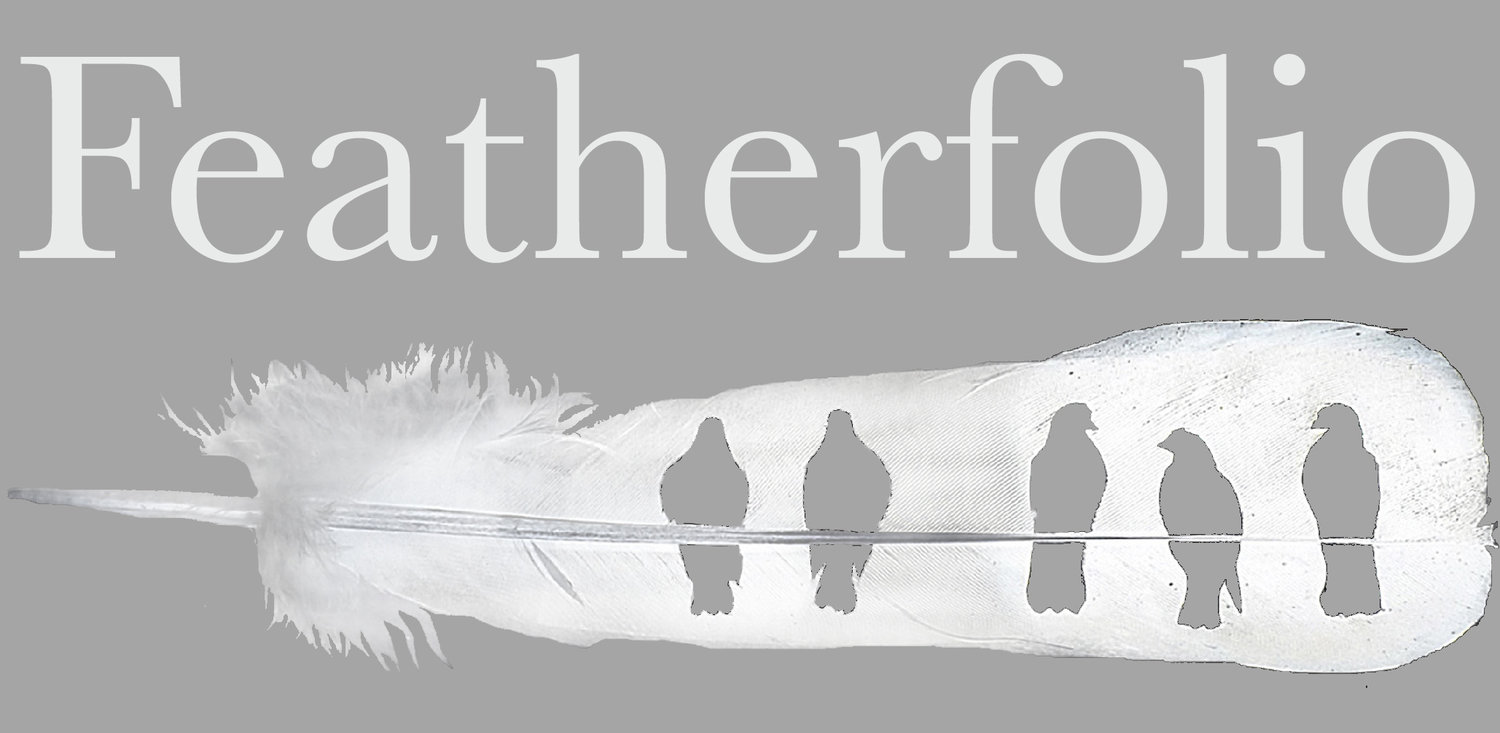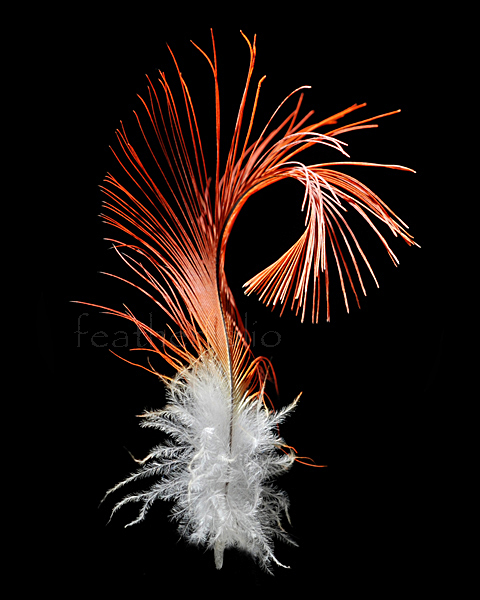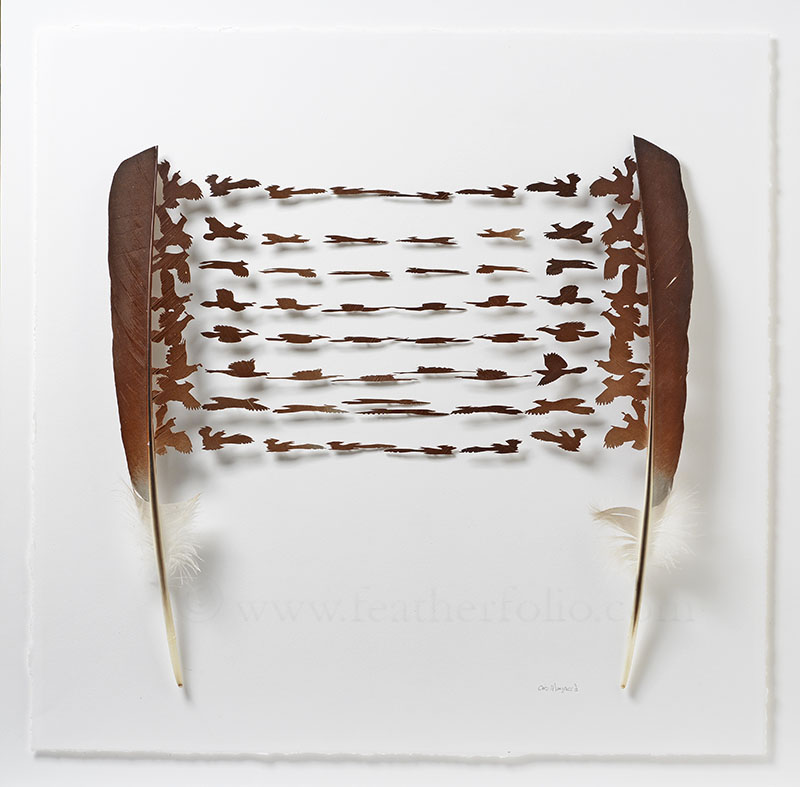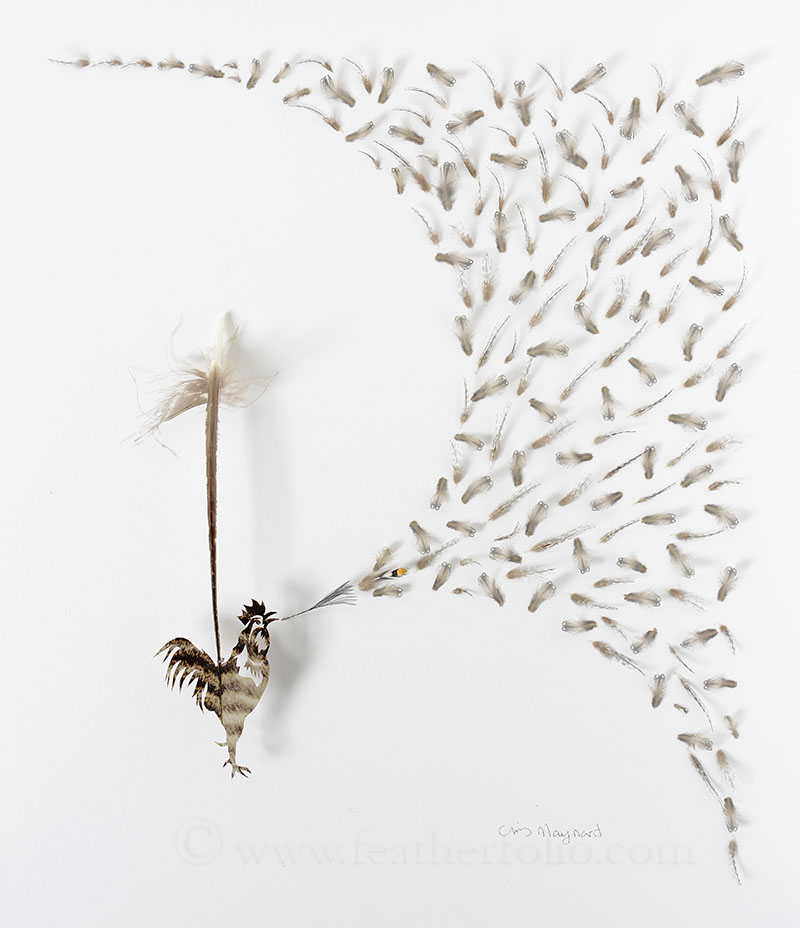Gang-gang Cockatoo (Callocephalon fimbriatum) lives in Australia. This floppy male crest feather is 2-1/2 inches long.
I pay special attention to the legal requirements of possessing feathers since I sell feather art. Many people tell me about their small feather collections so I thought I’d share a rough guide to what feathers you can have in the USA.
I can have:
- Feathers from most birds that are not native to North America. European Starlings, House Sparrows, Eurasian Collared Doves, and Ring-neck Pheasants are not native to North America. Also, think feathers of peacocks, many parrots, most of the 55 species of pheasants, and small songbirds like zebra finches that are kept in cages. The biggest exceptions to this are the restrictions on having feathers of most birds that live outside North America that are critically endangered1,3.
- Feathers from most wild duck and geese you can’t sell, except for mallards. You can sell other kinds of duck feathers only if it is for fly tying for fishing.
- Upland birds that people hunt—like turkey, grouse, and pheasant. Each state can have more restrictive laws, like in Washington State the Sharp-tailed Grouse is threatened so you can’t have those feathers unless you show it came from another state where hunting is permitted.
I can’t have:
- Feathers from almost all other birds in my country—not eagles of course, but also not seagull feathers, songbird feathers, or even crow feathers (unless you have a permit to kill crows, but you still can't sell them).2
- Feathers from many birds from other countries that are critically endangered3.
Though all birds naturally shed their feathers about once a year, you’re not legally supposed to have most of them. A law called the (U.S.) North American Migratory Bird Act was made a long time ago when people were killing too many birds to use for fashionable hats. It’s a broad-brush law intended to protect birds. It doesn’t recognize the difference between plucked feathers, shed feathers, or bird skins; you can’t have any of it. If a feather was pulled from a dead bird that you found at the side of the road or the beach, how does someone know that the bird wasn’t killed on purpose just for the feathers? It can sometimes seem silly but it is a matter of reasonable enforcement, like speeding law enforcement on the highway.
I try to be familiar with the laws but the U.S. Fish & Wildlife Service is the place to go to for the final word in the USA. Here are some links to their sites plus another helpful link:
1 The American Federation of Aviculture's website has a discussion of when you can have feathers from parrots from other countries that are critically endangered in those countries but because they are commonly kept in aviaries in the USA, it is ok to have their feathers in the USA.
2 The U.S. Fish and Wildlife Service is the place to go for the final word on the Migratory Bird Act. The law is explained and they have an alphabetically arranged list of protected birds.
3 Here is a link to lists of earth's endangered species; click Cites Appendices. The U.S. Fish and Wildlife Service oversees the Convention on Internation Trade in Endangered Species (CITES) within the USA.




















